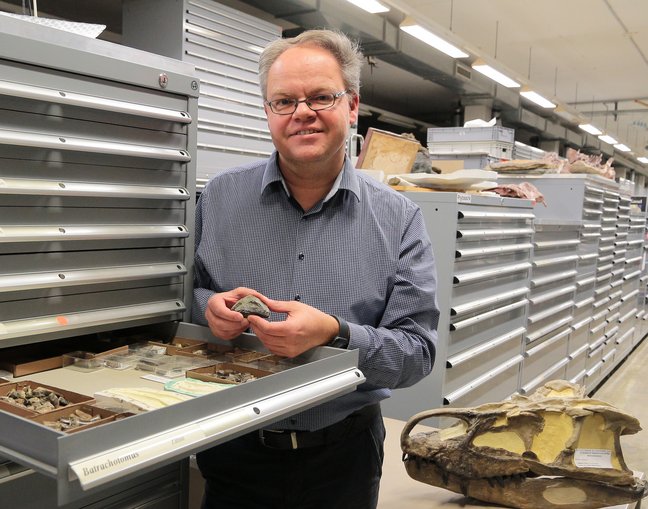Alongside the squamates (lizards and snakes), crocodiles and turtles, rhynchocephalians („beak heads“) are the fourth group of reptiles still alive today. However, while there are over 10,000 species of its sister group, the squamates, worldwide, only the tuatara (Sphenodon punctatus) remains of the rhynchocephalians. It lives on a few small islands near the coast of New Zealand and is severely threatened with extinction. In the geological past, rhynchocephalians played a more important role and have developed many different forms over time.
Paleontologists Dr. Hans-Dieter Sues and Dr. Rainer Schoch have now succeeded in identifying the oldest representative of this group in terms of phylogeny. Tiny bone fragments, including parts of the jaw, were discovered near Vellberg in the district of Schwäbisch Hall and clearly identified as a rhynchocephalian due to their unique features. A comparison with other species now shows that the fossil, which is around 240 million years old, is not only the oldest evidence of this group, but that this new species is also the most primitive member of rhynchocephalia discovered to date.
The Vellberg fossil site already made headlines in 2015 when the same team was able to identify the fossil remains of the oldest turtle in the world. In addition to bizarre-looking crocodile-relatives and giant amphibians, the "Vellberg Lake" was also home to early representatives of squamates, which at first glance are only slightly different from rhynchocephalians.
The name of the new species Wirtembergia hauboldae honors both the state of Baden-Württemberg and Ute Haubold, who found a large portion of the fossil material and made it available to science. The ongoing research on the Vellberg fossils will certainly yield some more exciting finds that could change our understanding of the development of different animal groups.
